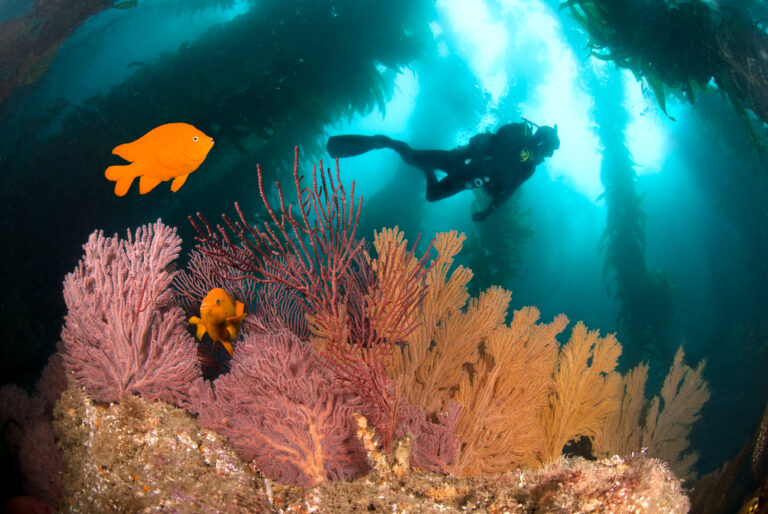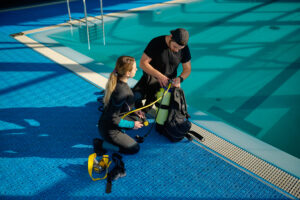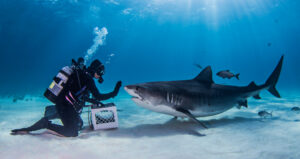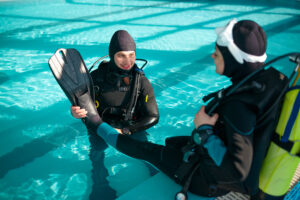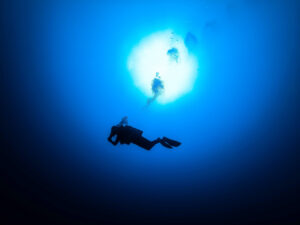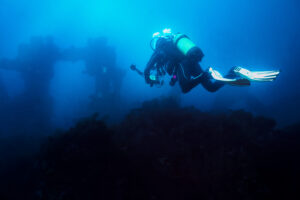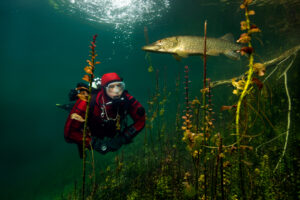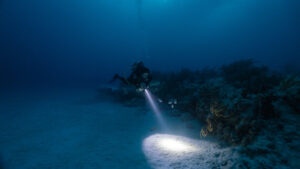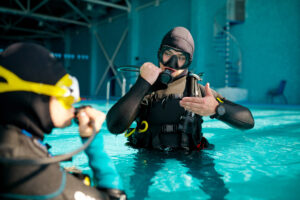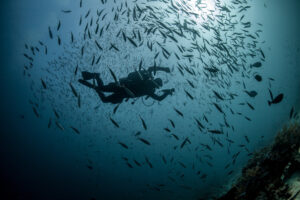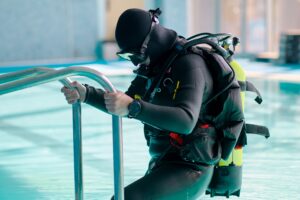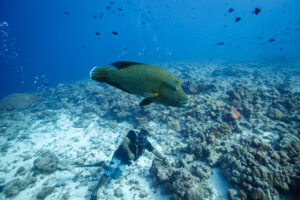What is a Cubic Foot (cf)?
A cubic foot (cf) is a unit of measurement representing volume and is commonly utilized to denote the size of scuba cylinders, which are critical components in the scuba diving experience. Scuba cylinders contain the compressed breathing gas essential for underwater excursions, enabling divers to breathe comfortably as they explore the aquatic environment. The size of a scuba cylinder, often expressed in cubic feet, directly correlates to the amount of air it can hold and the potential dive duration. This entry will explore the concept of cubic feet in relation to scuba cylinders, the significance of various cylinder sizes, and the factors influencing the choice of cylinder for different diving scenarios.
Understanding the Cubic Foot
A cubic foot is a unit of volume measurement in the Imperial system, equivalent to a cube with each side measuring one foot (12 inches, or approximately 30.48 centimeters) in length. In the context of scuba diving, the cubic foot is a practical means of expressing the internal volume of a scuba cylinder, indicating the amount of compressed breathing gas it can contain. This gas is typically air, but may also include specialized gas mixtures such as Nitrox, Trimix, or Heliox, depending on the dive’s specific requirements.
Standard Scuba Cylinder Sizes
Scuba cylinders are available in various sizes to accommodate the diverse needs of divers. The standard cylinder sizes, expressed in cubic feet, include 30, 50, 72, and 80 cf. Each size corresponds to specific diving situations and individual preferences, as outlined below:
- 30 cf: The 30 cubic foot cylinder is compact and lightweight, making it suitable for shorter dives, shallow depths, or as a backup air source. This size is popular among technical divers for stage or decompression bottles and underwater photographers who require maneuverability and minimal equipment.
- 50 cf: The 50 cubic foot cylinder is a versatile option for recreational divers, as it balances size, weight, and air capacity. It is ideal for moderately shallow dives with average air consumption rates, offering a suitable dive duration without excessive bulk.
- 72 cf: The 72 cubic foot cylinder provides a greater air capacity for extended dive times, deeper depths, or divers with higher air consumption rates. This size is a popular choice among advanced recreational divers and professionals, accommodating a wider range of diving conditions.
- 80 cf: The 80 cubic foot cylinder is the most common size for recreational scuba diving, offering ample air supply for various dive profiles and durations. Its popularity is largely due to its balance of volume, weight, and versatility in accommodating the majority of divers’ needs.
Factors Influencing Cylinder Size Selection
Several factors influence the choice of scuba cylinder size for a particular dive, including the following:
- Dive Duration: Longer dives require larger cylinders to supply sufficient air for the entire excursion. Technical dives, deep dives, or extended bottom times necessitate larger cylinder sizes such as the 72 or 80 cf.
- Air Consumption Rate: Individual air consumption rates vary based on factors such as fitness, experience, and stress levels. Divers with higher consumption rates may require larger cylinders to accommodate their needs, while those with lower rates can utilize smaller cylinders.
- Dive Environment: The dive environment, including depth, water temperature, and visibility, can impact the choice of cylinder size. Deeper dives or challenging conditions may necessitate larger cylinders, while shallow, relaxed dives can be completed with smaller options.
- Personal Preference: Ultimately, a diver’s personal preference plays a significant role in selecting the appropriate cylinder size. Comfort, buoyancy control, and equipment familiarity are essential factors to consider when making this decision.
Key Takeaways
The cubic foot (cf) is a crucial unit of measurement in scuba diving, particularly for expressing the volume of scuba cylinders. With standard sizes of 30, 50, 72, and 80 cf, these cylinders cater to a wide range of diving situations and individual requirements. The size of a scuba cylinder directly impacts the amount of compressed breathing gas it can hold and thus, the potential dive duration.
Divers must consider various factors when selecting the appropriate cylinder size, such as dive duration, personal air consumption rate, dive environment, and personal preferences. Smaller cylinders, like the 30 cf, are well-suited for shorter, shallow dives or as backup air sources. In contrast, larger cylinders like the 72 and 80 cf offer greater air capacity for extended dive times, deeper depths, or divers with higher air consumption rates.
Ultimately, the choice of scuba cylinder size is crucial to ensuring a safe and enjoyable diving experience. By understanding the significance of cubic feet in the context of scuba diving and considering individual needs and circumstances, divers can make informed decisions about their equipment and maximize their underwater adventures. In doing so, they contribute to the ongoing fascination with and exploration of the world’s underwater environments, further expanding the knowledge and appreciation of our planet’s diverse and captivating aquatic ecosystems.

